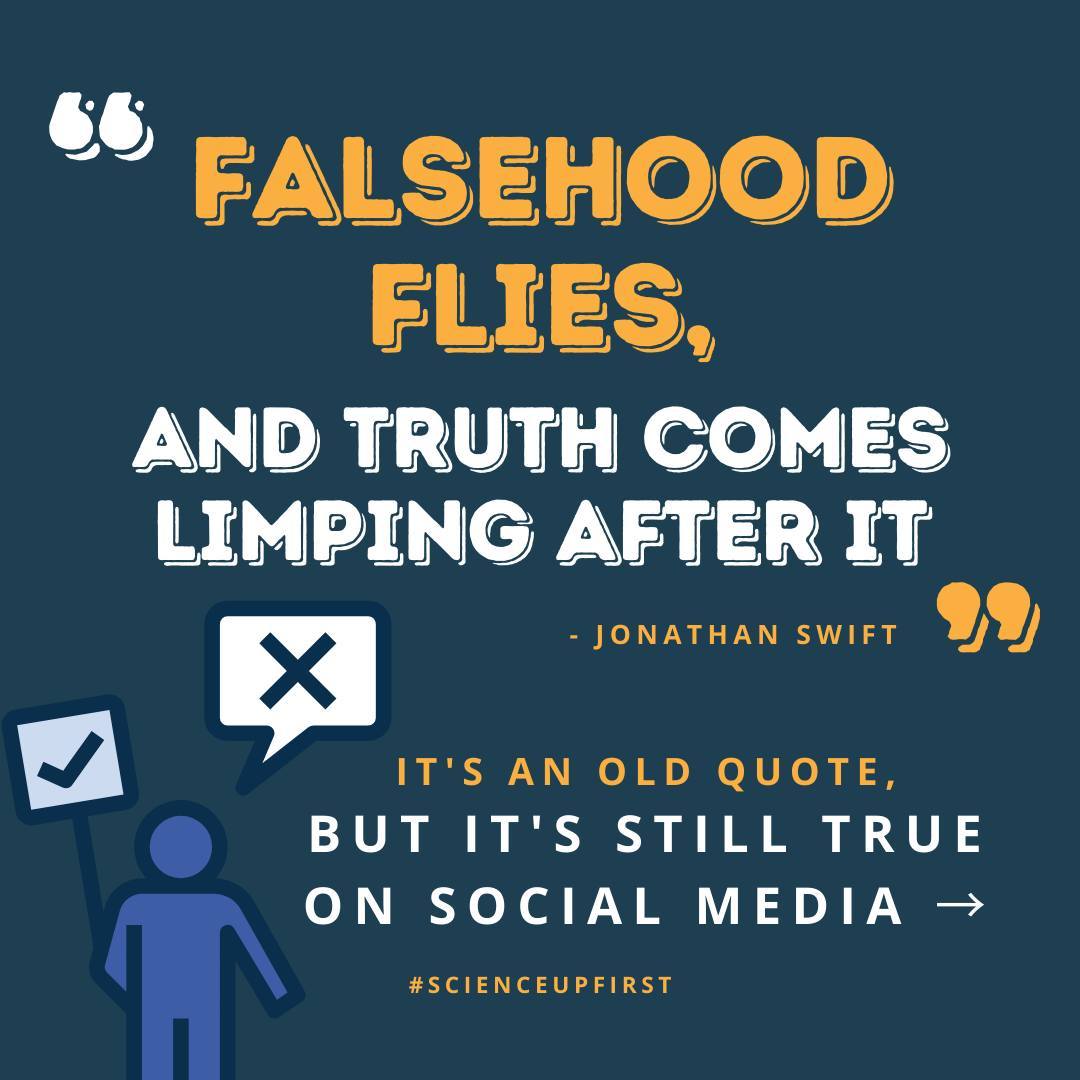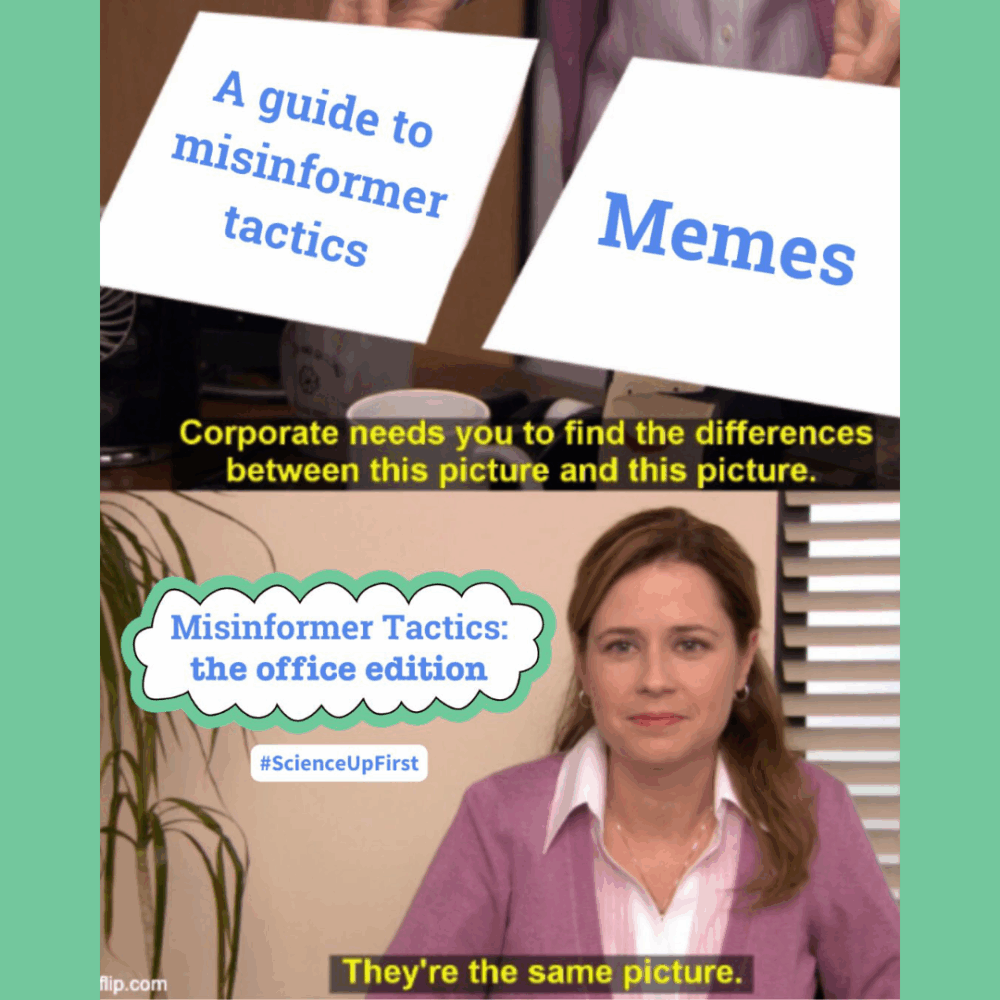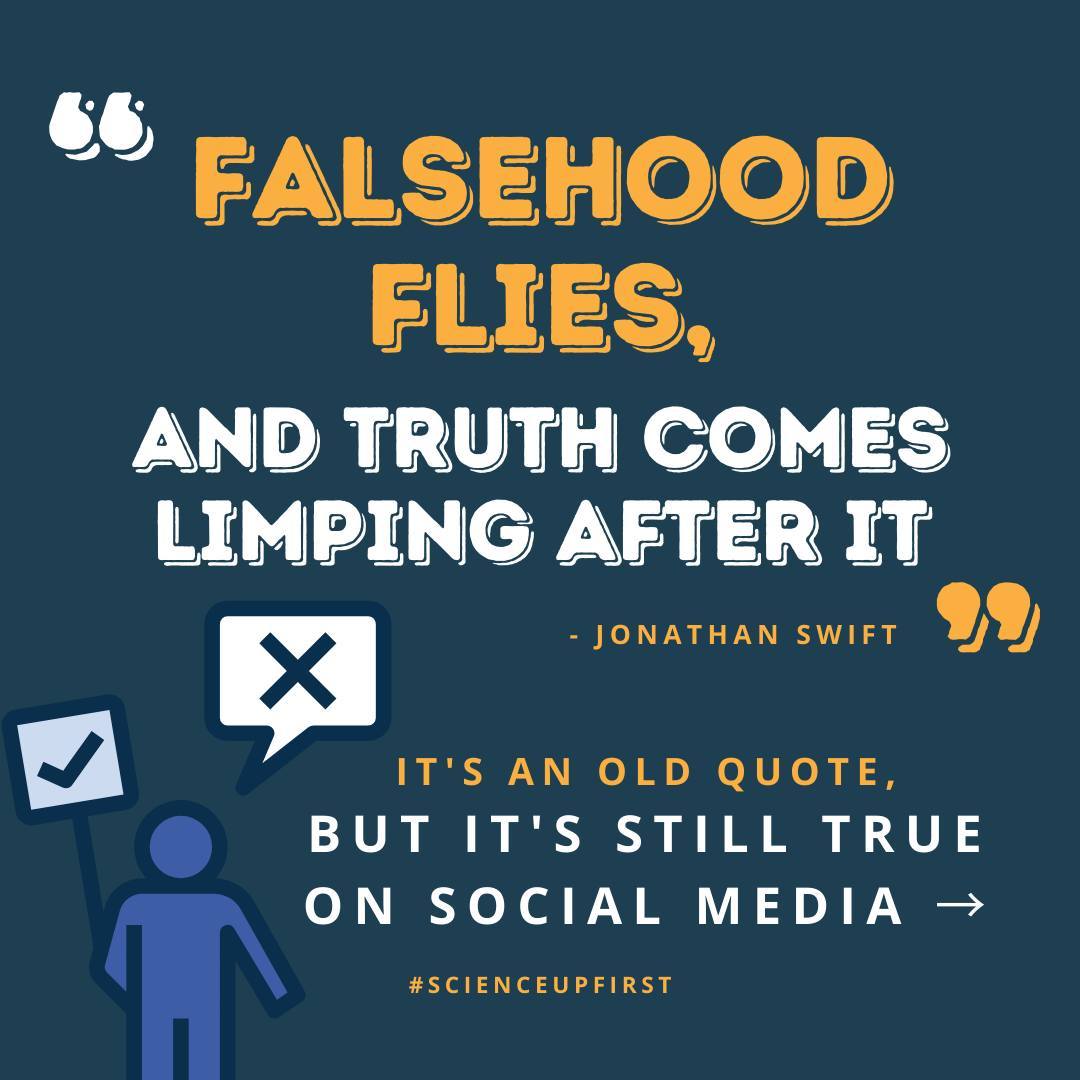
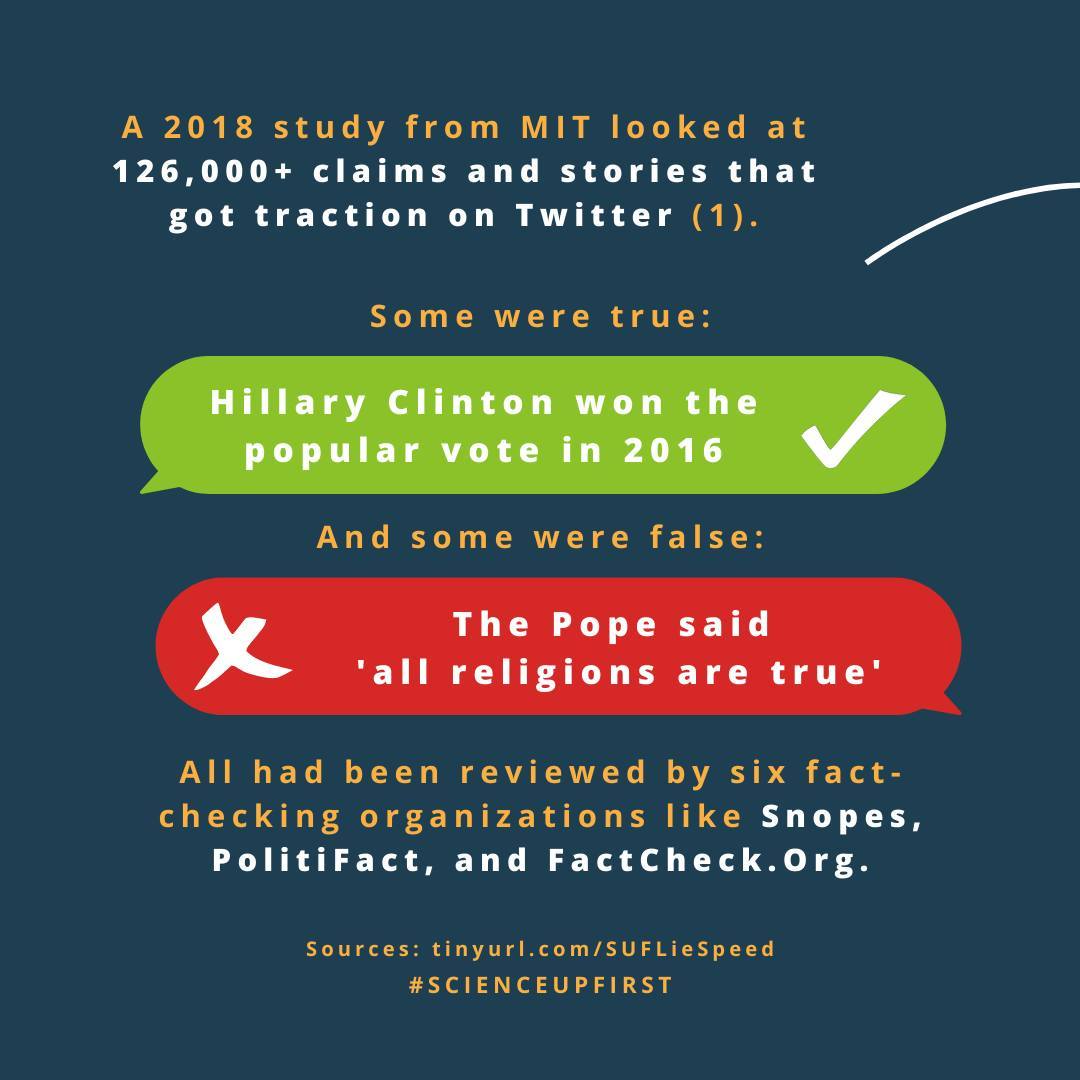
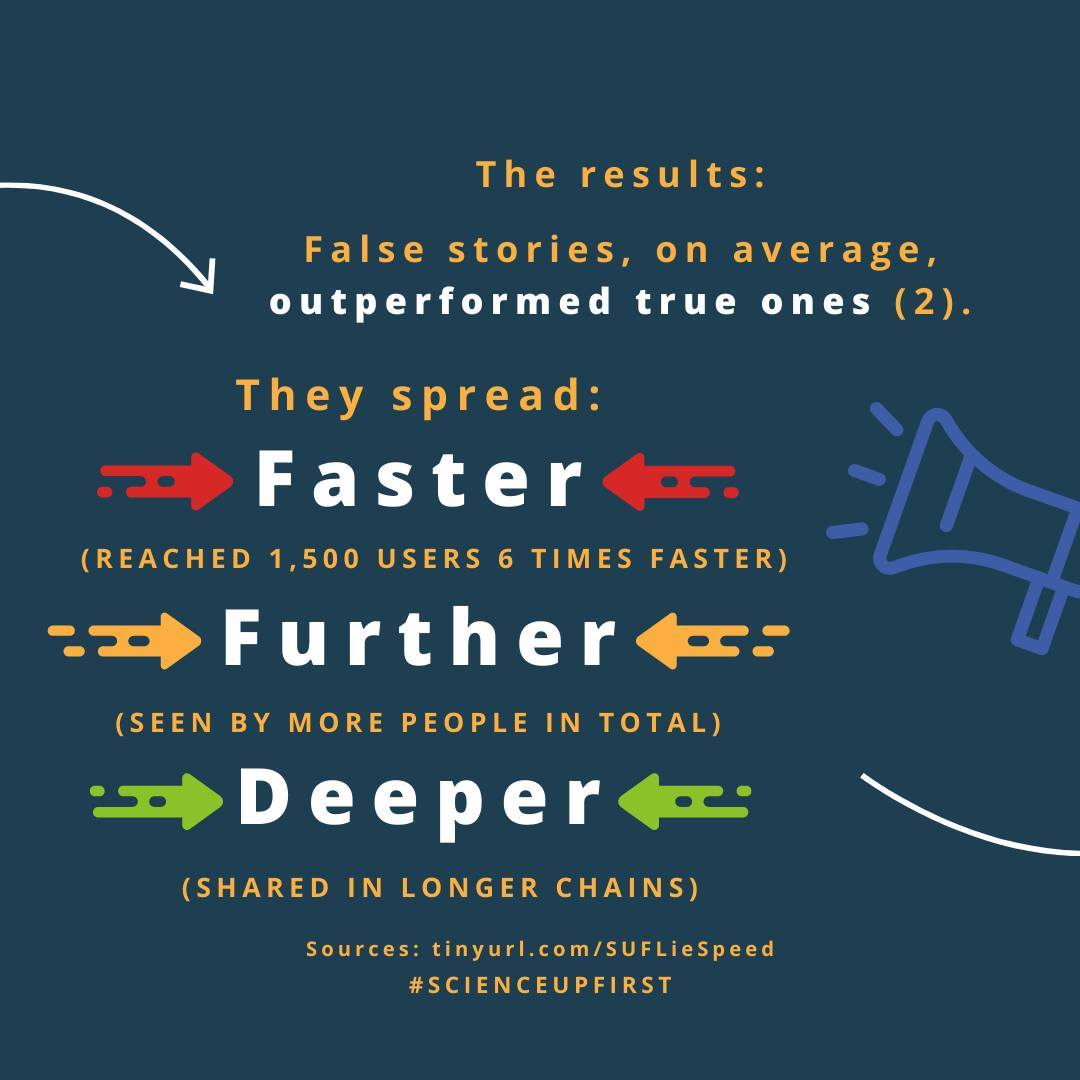
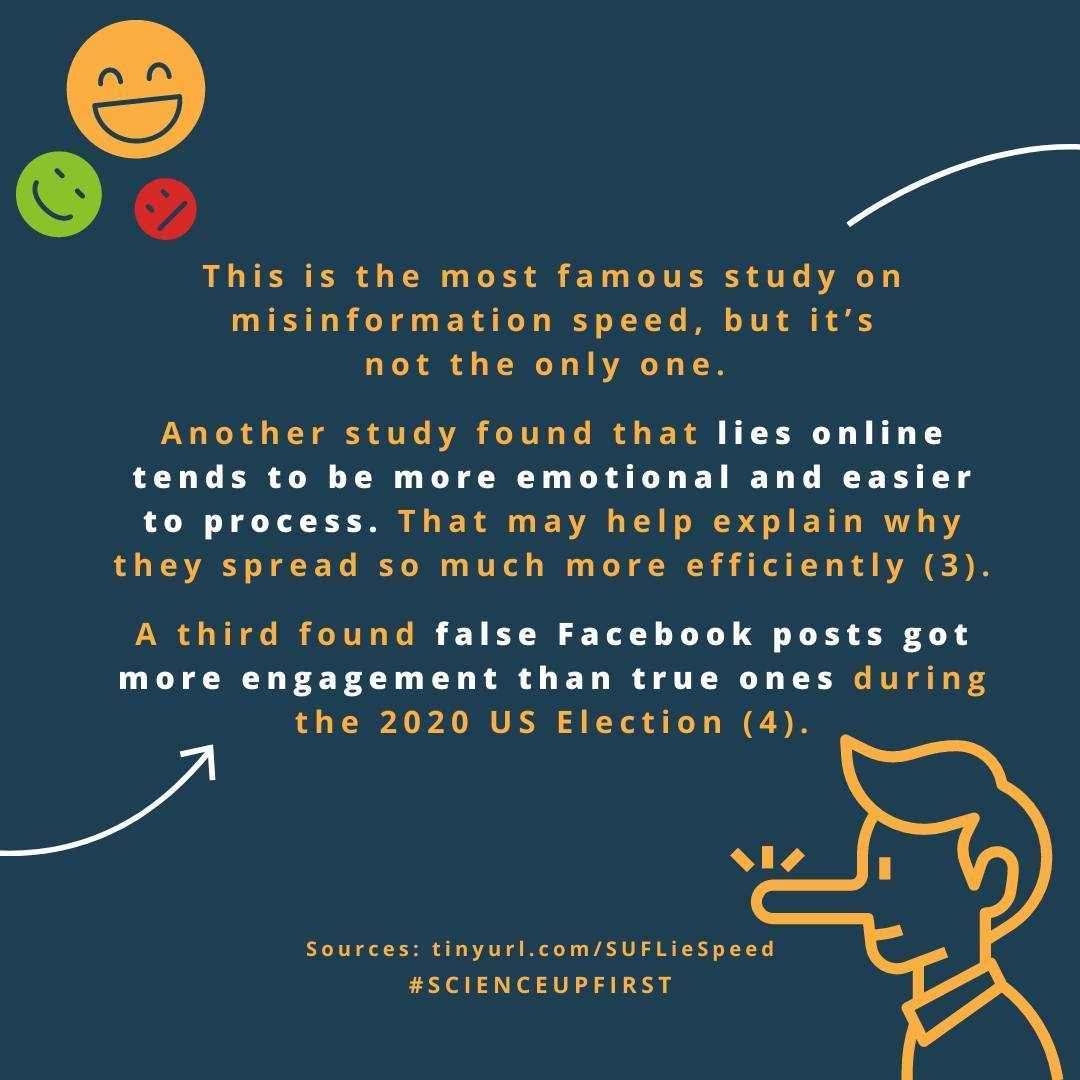
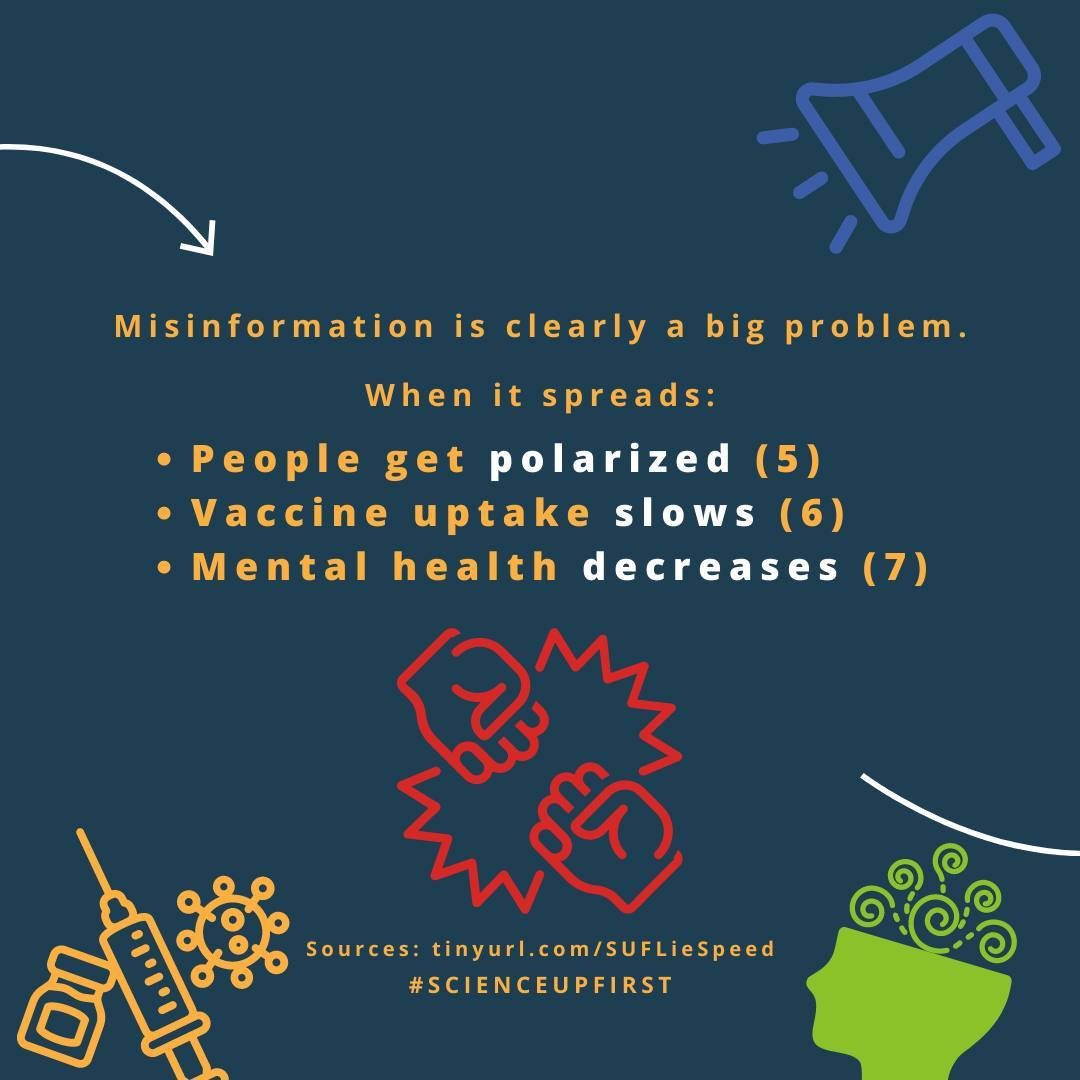
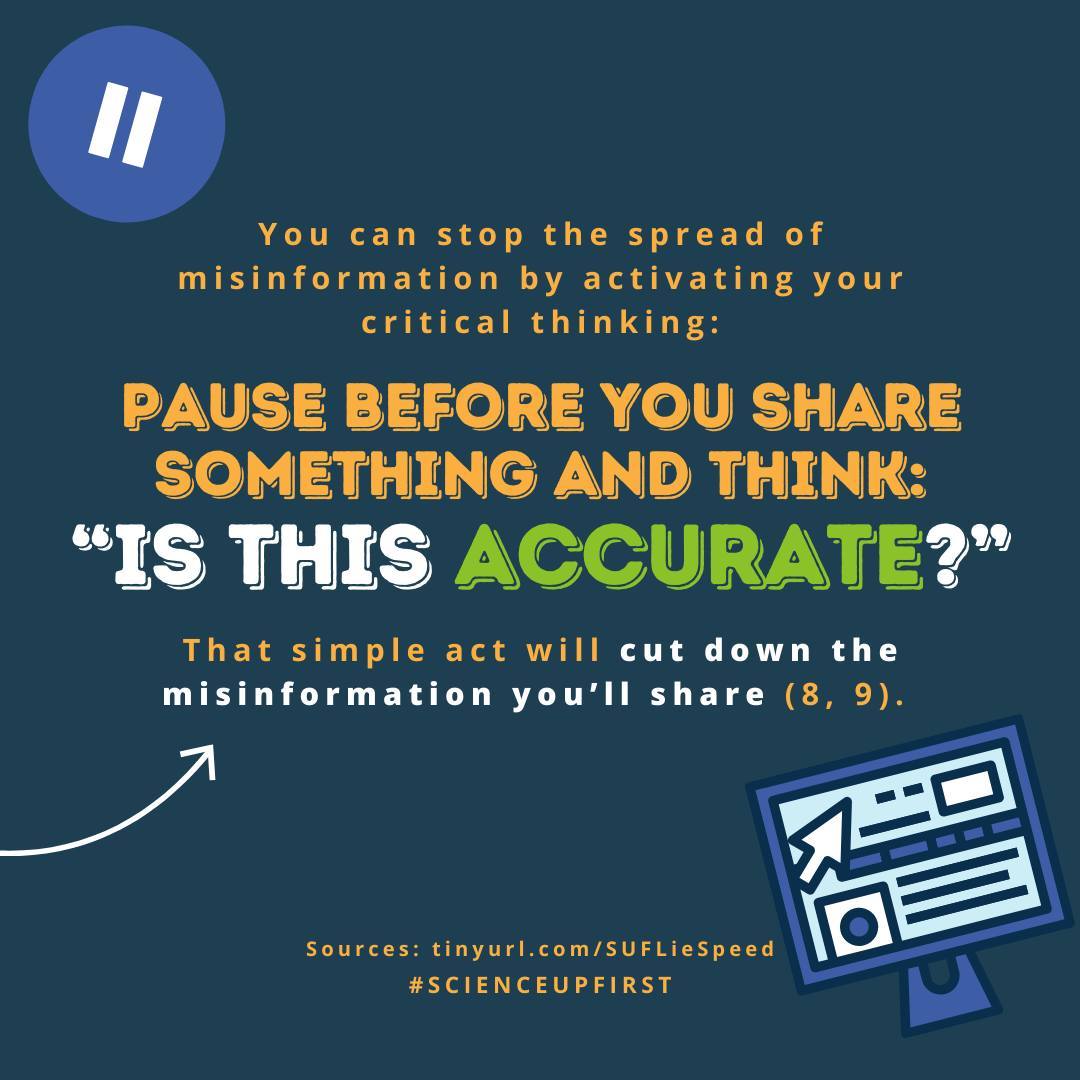
“Falsehood flies, and the truth comes limping after it”
That’s not just an old saying. Research shows it’s true on social media too!
Misinformation tends to be a lot more engaging than truthful information. Keep reading to find out more!
You can help stop the spread of misinformation by simply pausing before sharing something.
Always think: “is this true?” before clicking send!
Share our original Tweet!
“Falsehood flies, and the truth comes limping after it.”
That’s not just an old saying. Research shows it’s true on social media too!
A thread on the speed of misinformation ⬇️#ScienceUpFirst
[1/8] pic.twitter.com/UUgVjvjDMu
— ScienceUpFirst | LaScienced’Abord (@ScienceUpFirst) July 5, 2022
View our original Instagram Post!
View this post on Instagram
- The spread of true and false news online (paywalled) | Science | March 2018 | Non-paywalled link here.
- Research Brief – The spread of true and false news online
- The fingerprints of misinformation: how deceptive content differs from reliable sources in terms of cognitive effort and appeal to emotions | Humanities and Social Sciences Communications
- Misinformation on Facebook got six times more clicks than factual news during the 2020 election, study says | NYU Tandon School of Engineering
- The Role of Online Misinformation and Fake News in Ideological Polarization: Barriers, Catalysts, and Implications
- Online misinformation is linked to early COVID-19 vaccination hesitancy and refusal | Scientific Reports
- Examining the impact of sharing COVID-19 misinformation online on mental health | Scientific Reports
- Accuracy prompts are a replicable and generalizable approach for reducing the spread of misinformation | Nature Communications
- Developing an accuracy-prompt toolkit to reduce COVID-19 misinformation online

